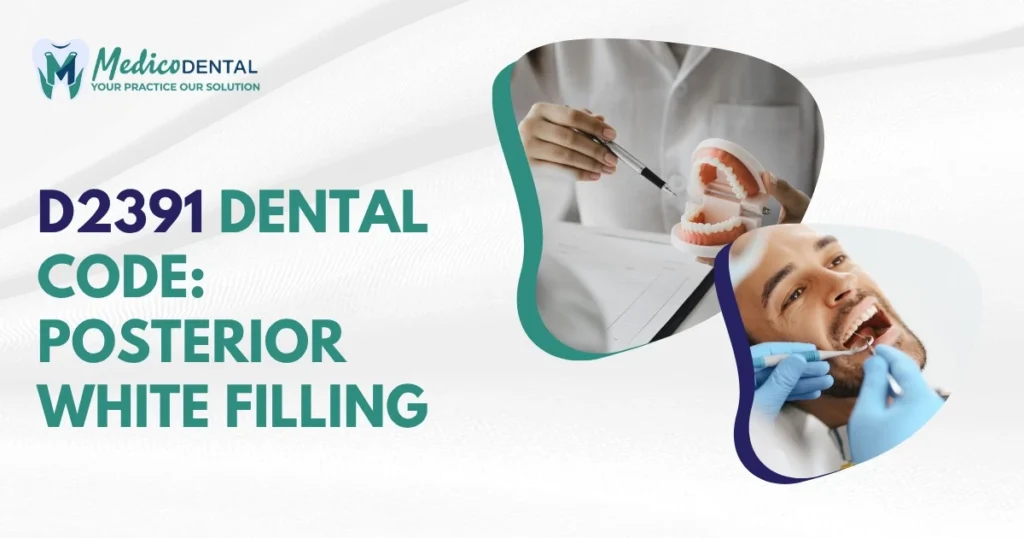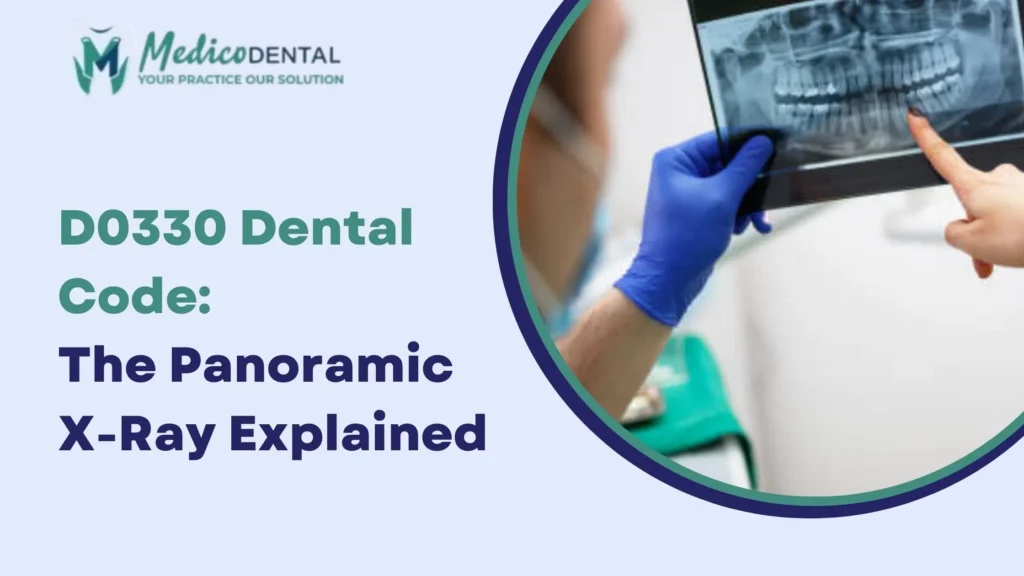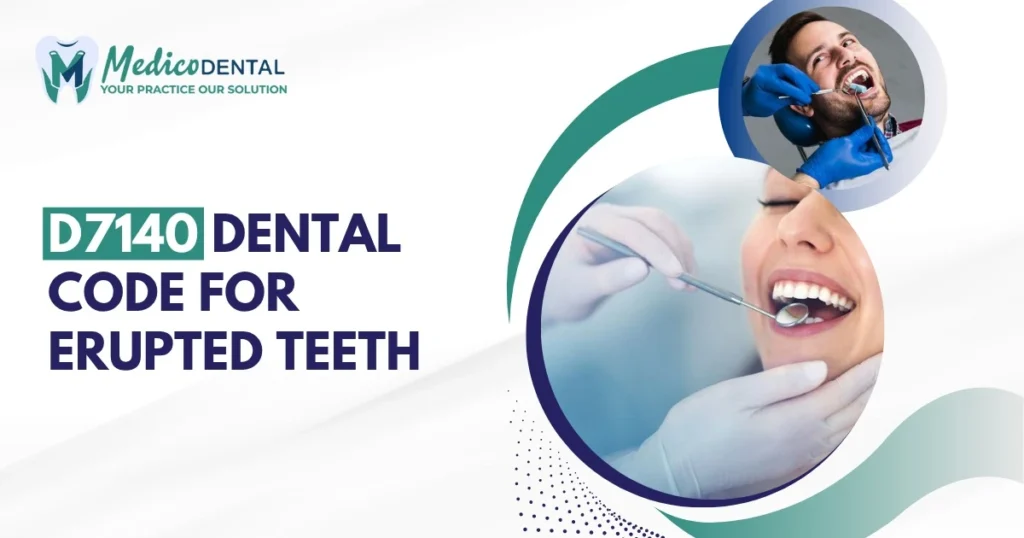The D2391 dental code refers to a specific type of dental filling used to restore a single surface of a posterior tooth, such as a molar or premolar, with a resin-based composite material. This code is commonly used for repairing cavities, chips, or minor damage to the tooth. Composite fillings are an ideal choice for these procedures as they blend seamlessly with the natural color of the tooth, providing both functional and aesthetic benefits. Understanding the D2391 code is crucial for accurate treatment and billing in restorative dentistry.
What is the D2391 Dental Code?
The D2391 dental code refers to the use of a resin-based composite filling applied to one surface of a posterior tooth. It is commonly used to restore teeth affected by cavities, chips, or wear. Understanding this dental code is essential for both dentists and patients to ensure accurate diagnosis, treatment, and billing for restorative dental procedures.
Definition of the D2391 Code
The D2391 code is a designation used in dental billing to represent the application of a resin-based composite filling on a single surface of a posterior tooth. This code specifically covers fillings made from tooth-colored composite materials, which are designed to blend seamlessly with the natural color of teeth, providing an aesthetic solution for cavities and minor tooth damage.
Types of Fillings Covered by D2391
The D2391 code typically applies to one-surface fillings, where a single surface of the tooth is treated with composite resin. These fillings are ideal for cavities that affect only one surface of a posterior tooth, such as the chewing surface (occlusal), the side of the tooth (buccal or lingual), or the contact point between teeth.
Where is the D2391 Code Used?
The D2391 code is primarily used for restorative procedures on the posterior teeth, such as molars and premolars. These teeth are located in the back of the mouth and are typically the first to be affected by decay due to their function in chewing.
Application on Posterior Teeth
The D2391 filling is ideal for posterior teeth, as these teeth are more prone to decay and damage from regular use. The resin-based composite filling helps to restore the function and appearance of these teeth, allowing patients to eat and speak more comfortably.
Common Teeth Involved (Molars & Premolars)
The molars and premolars are the most common teeth treated with the D2391 code. These teeth are essential for chewing and breaking down food. When these teeth develop cavities or chips, composite fillings offer a functional and aesthetic solution for restoration.
How Many Surfaces Does the D2391 Code Cover?
The D2391 code is used specifically for one-surface fillings. This means that only one side of the tooth is restored with the composite resin.
One-Surface Fillings
As a one-surface procedure, the D2391 code is used when a cavity or minor damage is limited to a single surface of the tooth. This can include areas like the chewing surface, where food and plaque tend to accumulate, or other individual tooth surfaces affected by damage or decay.
Types of Tooth Surfaces (Occlusal, Buccal, Lingual)
The surfaces treated under the D2391 code can vary depending on the location of the decay or damage. These include:
- Occlusal: The chewing surface of the tooth.
- Buccal: The outer surface facing the cheek.
- Lingual: The inner surface facing the tongue.
The resin-based composite filling is designed to match the tooth’s natural appearance while restoring its function.
Why is the D2391 Dental Code Used?
The D2391 code is used to restore a tooth that has been affected by decay, chips, or misshaping. This procedure is essential for maintaining the health and appearance of the posterior teeth, ensuring the patient can eat and speak normally.
Restoring Cavities
The D2391 code is most commonly used for filling cavities in posterior teeth. When a tooth develops a cavity due to decay, the composite resin filling restores the tooth’s structure, preventing further damage and infection. The tooth-colored material ensures that the filling blends naturally with the rest of the teeth.
Repairing Chips and Cracks
In addition to cavities, the D2391 code is used to repair teeth that have been chipped or cracked. Whether due to accidental trauma or normal wear and tear, a composite resin filling can restore the tooth’s shape and function while maintaining its aesthetic appearance.
Reshaping Misshapen Teeth
Sometimes, posterior teeth may become misshapen due to developmental issues, wear, or damage. The D2391 code allows the dentist to reshape the tooth using composite resin, improving both its function and appearance. This is particularly important for patients who want a more natural-looking smile.
Benefits of Resin-Based Composite Fillings (D2391)
Resin-based composite fillings, specifically D2391, offer several advantages over other types of dental restorations. These benefits include aesthetic appeal, durability, and the ability to preserve more of the natural tooth structure.
Aesthetic Advantages
One of the primary benefits of D2391 fillings is their aesthetic appeal. The resin-based composite material can be color-matched to the natural shade of the tooth, making it nearly invisible. This is especially important for fillings placed on posterior teeth, where visibility is a concern. The natural look of composite fillings ensures that patients can smile and speak confidently without worrying about noticeable dental work.
Durability and Longevity
Although composite fillings are more prone to wear than metal alternatives, they still provide excellent durability and longevity when used properly. D2391 fillings are designed to withstand the normal wear and tear of chewing. They can last for many years with proper care, making them a reliable choice for posterior teeth restoration.
Tooth Conservation
Unlike traditional metal fillings, resin-based composites require less removal of the natural tooth structure. This tooth conservation allows for a more minimally invasive procedure, helping to preserve the tooth’s integrity. For patients concerned about the long-term health of their teeth, this benefit is especially significant.
How to Bill for D2391: Common Billing Practices
Billing for D2391 requires attention to detail to ensure proper reimbursement and avoid common pitfalls. Accurate coding and understanding insurance requirements can streamline the billing process and help avoid costly errors.
Insurance Coverage and Reimbursement
Insurance companies typically cover D2391 fillings when they are deemed medically necessary, such as for treating cavities or tooth decay. However, reimbursement rates can vary depending on the insurance provider and the region. It’s crucial to confirm coverage for resin-based composite fillings and ensure that the procedure meets the necessary criteria to qualify for reimbursement.
Common Mistakes in Billing D2391
One of the most common mistakes in billing D2391 is failing to provide proper documentation for the procedure. Missing or incomplete forms, such as patient records and treatment notes, can result in claim denials. Additionally, using the wrong code for the filling, such as mixing up D2391 with other composite codes, can also lead to issues with reimbursement.
Tips for Maximizing Reimbursement
To maximize reimbursement for D2391 fillings, it’s important to:
- Verify insurance benefits before performing the procedure.
- Provide detailed documentation that justifies the medical necessity of the treatment.
- Double-check the coding to ensure that the correct code is used.
- Stay updated on insurance changes to adjust billing practices accordingly.
Summary
The D2391 dental code is essential for understanding the application of resin-based composite fillings in restorative dentistry. Properly utilizing this code ensures accurate treatment, correct billing, and optimal patient outcomes.
Accurate coding, like D2391, is critical for proper dental billing. Using the correct code ensures that insurance claims are processed correctly and reimbursed in a timely manner. Mistakes in coding can lead to delays or denials, impacting both the patient’s treatment and the dental practice’s revenue.
It is crucial to choose the correct dental code based on the procedure performed. D2391 is used specifically for one-surface posterior composite fillings, and using it accurately will prevent billing errors and ensure that patients receive the care they need. Understanding and applying the appropriate code can improve the overall efficiency of the dental practice and patient satisfaction.
FAQs
What’s the difference between D2391 and other composite codes?
Ans. The D2391 code is specifically used for one-surface composite fillings on posterior teeth (molars and premolars). Other composite codes, like D2392 and D2393, are used for multiple surface fillings. The main difference lies in the number of surfaces covered by the filling.
How long does a D2391 filling last?
Ans. A D2391 filling can last 5 to 10 years or longer, depending on the location of the filling, how well the patient maintains oral hygiene, and the amount of pressure the tooth undergoes during chewing. Regular checkups with a dentist are essential to monitor the integrity of the filling.
Can D2391 be used on front teeth?
Ans. D2391 is generally used for posterior teeth, such as molars and premolars. For front teeth, dentists typically use composite fillings that are designed for more visible areas. However, some dentists may opt for D2391 on front teeth if the procedure involves a small, less visible surface that requires restoration.



